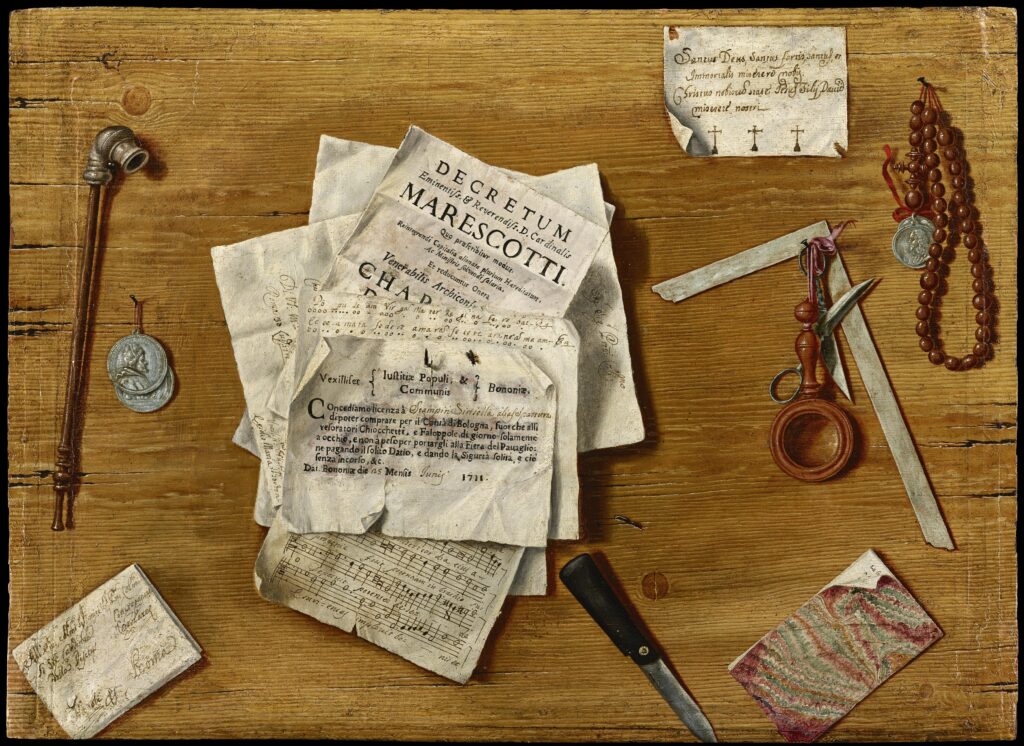Egidio Maria Bordoni
Bologna, active late 17th and early 18th century
A Trompe l’Oeil Still Life of Letters, Sheet Music, a Magnifying Glass, Scissors, Amulets, a Rosary, a Pipe and a Knife displayed against a Deal Board

Medium:
Oil on Canvas
Category:
Dimensions:
53.5(h) x 74(w) cms
Signed:
Signed centre left on the papers
Essay:
Little is known about the painter and engraver Egidio Bordoni. He was a talented artist who specialised in trompe l'oeil compositions working in Italy (mainly around Bologna) in the late 17th and early 18th century. Most of his works feature documents, sheet music, sketches and engravings, and other items pinned to wooden panels. This 'pin board' type of trompe l'oeil ultimately derives from the likes of northern artists such as Edward Collier and Cornelis Norbertus Gijsbrechts. The style found a vogue in Northern Italy in the 18th century with artists including Benedetto Sartori and Sebastiano Lazzari with Bordoni being one of the earliest proponents.
-
This rare and wonderfully detailed trompe l'oeil by Bordoni appears to have been painted for a highly educated and cosmopolitan Italian client. Amongst the various scattered papers affixed to the board the date 1711 is mentioned twice which suggests the approximate date or a terminus post quem for the artwork. Meanwhile various Italian cities including Bologna, Rome, and Naples are mentioned. It is Bologna which has the most emphasised presence within the painting, and as Bordoni himself was from Bologna we may assume that the work was intended for a Bolognese audience.
The printed note with handwritten inserts is a grant from the Council of Bologna (Bononiae in Latin) for 'Stampini Sirisella' to buy for the Count of Bologna 'Chicchetti' and 'Faloppole'. Today Chicchetti are snacks served in Venice which include sandwiches and other small dishes. It is not clear what Faloppole refers to, but perhaps it could be another foodstuff or something to accompany the Chiccetti like wine or the plates they are served on.
The grant is dated: 'Dat. Bononiae die 25 Mensis Junii 1711'. Translation: Dated at Bologna on 25 June 1711. The year 1711 is also mentioned on a piece of paper below the grant in the pile: 'Roma 30 Juli 1711'.
The medal to the left of the picture appears to show a bust of Clement XIII who was not from Bologna but did study there and visited as Pope in 1598.
This picture is unframed.
Provenance:
Private Collection, UK